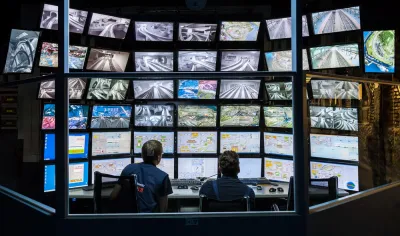Over the next two decades, bold estimates have local governments around the world spending over $41 trillion on "smart cities." But what are smart cities, and how do we measure return on investment?

Apparently, the future is now. According to some experts, "Cities around the world will invest a total of about $41 trillion over the next 20 years to upgrade their infrastructure and benefit from the network of connected devices known as the Internet of Things."
That astronomical figure is an estimate, but it's a telling one. Aneri Pattani writes, "Smart technology uses the Internet of Things to gather data, connect components across the city and impact multiple departments or services in order to improve people's quality of life. Spending on smart technology has grown from 0.7 percent of city IT budgets in 2005 to 4.1 percent in 2015."
Even smaller municipalities are investing in tech-oriented "solutions" created to address civic challenges. "The Center for Digital Government estimates U.S. cities will spend about $52.4 billion on technology in 2016. That is a 2.5 percent increase over their spending in 2015. The federal government will spend about $89.8 billion on technology in 2016, just a 1.5 percent increase over its spending last year."
Of course, there's no set definition for "smart cities," and no way to accurately measure the size of the market. At this early stage, it's also difficult to determine exact ROIs for new government technologies. Often, improvements to perceived quality of life can persuade cities to adopt, despite that uncertainty.
The article encourages public-private partnerships on new tech, going beyond selling a single "solution" and moving on. To bring in lasting public sector business, companies should be willing to provide guidance around implementation.
FULL STORY: Building the city of the future — at a $41 trillion price tag

Analysis: Cybertruck Fatality Rate Far Exceeds That of Ford Pinto
The Tesla Cybertruck was recalled seven times last year.

National Parks Layoffs Will Cause Communities to Lose Billions
Thousands of essential park workers were laid off this week, just before the busy spring break season.

Retro-silient?: America’s First “Eco-burb,” The Woodlands Turns 50
A master-planned community north of Houston offers lessons on green infrastructure and resilient design, but falls short of its founder’s lofty affordability and walkability goals.

Test News Post 1
This is a summary

Analysis: Cybertruck Fatality Rate Far Exceeds That of Ford Pinto
The Tesla Cybertruck was recalled seven times last year.

Test News Headline 46
Test for the image on the front page.
Urban Design for Planners 1: Software Tools
This six-course series explores essential urban design concepts using open source software and equips planners with the tools they need to participate fully in the urban design process.
Planning for Universal Design
Learn the tools for implementing Universal Design in planning regulations.
EMC Planning Group, Inc.
Planetizen
Planetizen
Mpact (formerly Rail~Volution)
Great Falls Development Authority, Inc.
HUDs Office of Policy Development and Research
NYU Wagner Graduate School of Public Service




























